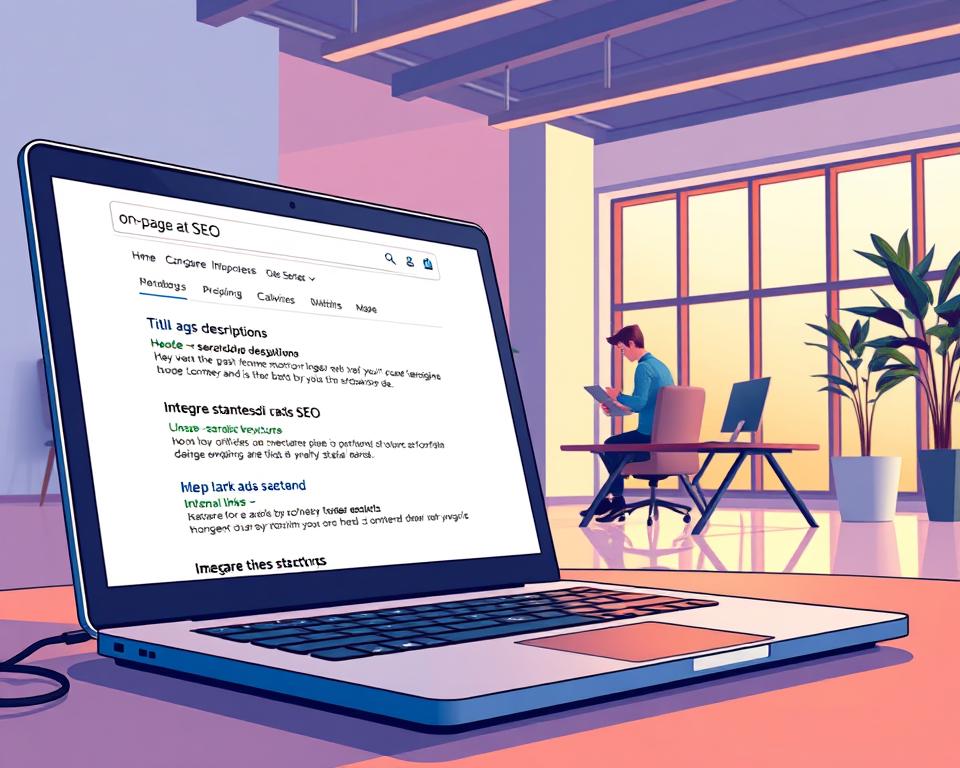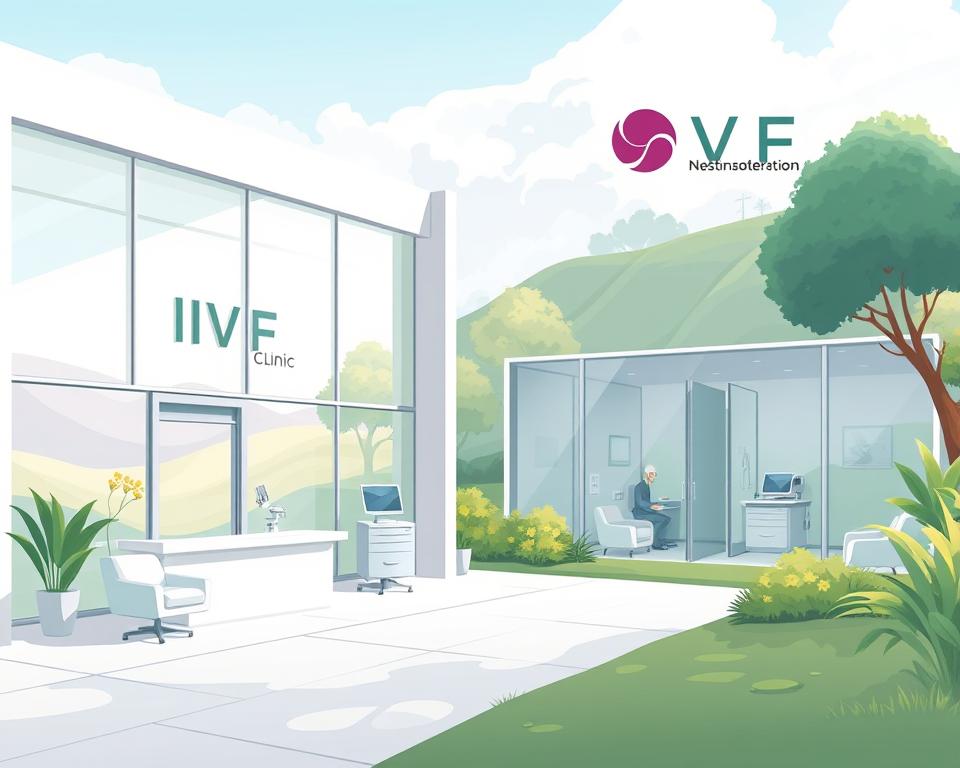Uncover Grand Abstract Wall Décor For Your Home
At first, Eleanor Hartwell’s Brooklyn loft seemed stark and unwelcoming. After adding a six-foot abstract canvas in deep blues and golds, the space transformed. Her friends were amazed by the change, highlighting the power of large abstract wall art in transforming homes.
BigArtify and AbstractXL harness this design magic. Started by Ella Lin alongside Eleanor Hartwell, the studios blend classic Large Abstract Painting methods with contemporary aesthetics. Every artwork is created on high-quality canvas using archival pigments for lasting vibrancy.
Abstract art communicates deeply without a single word. It can range from bold geometric patterns to organic shapes, evoking emotions. Artists layer archival paints to achieve depth and texture, making each piece unique. Backed by lifetime warranties and complimentary worldwide delivery, upgrading your walls is a breeze.
Your walls are ready for a statement piece. The right artwork can turn ordinary rooms into extraordinary spaces. Let’s explore how to choose pieces that reflect your style and improve your living environment.
Understanding the Appeal of Large Abstract Wall Art
Abstract art sparks a dialogue between the artwork, your living space, and all who see it. Unlike traditional paintings, abstract pieces encourage personal interpretation and emotional connection. Such expressive liberty cements luxury abstract wall decor as a top pick for contemporary home designers.

The Emotional Impact of Abstract Art in Living Spaces
A large abstract painting does more than just fill a wall. It dictates the room’s atmosphere. Bold brushstrokes and vibrant colors can energize a space, while soft, flowing forms create tranquility. Evidence suggests abstract imagery enhances creative thought and alleviates tension by inviting personal interpretation.
How Size Transforms a Room’s Atmosphere
Scale is key when choosing statement wall pieces. Grand canvases attract the eye and stabilize the room’s layout. They add visual weight that balances furniture and architectural features. Huge canvases create the illusion of taller ceilings and broader rooms.
What Makes Abstract Art So Popular
Today, art collectors and design professionals favor abstract art for several reasons:
- Versatility across different decor styles
- Classic look that stands the test of time
- Individual significance for every observer
- Capacity to harmonize with evolving decor
Interior designers and architects team up with artists to create luxury abstract wall decor that transforms spaces. Through this synergy, every artwork improves your routine environment and becomes a refined centerpiece.
Choosing the Perfect Big Canvas Art for Your Space
Selecting the perfect big canvas art involves more than style. It should harmonize with room size and daily movement. Additionally, it ought to yield visual cohesiveness. Today’s galleries feature custom dimension selections. So you can commission giant canvases to your precise measurements.
Such adaptability lets you turn any blank surface into a showpiece. Whether it’s a cozy reading nook or an expansive living room, the possibilities are endless.
How to Measure for Perfect Canvas Size
Begin by measuring your wall space carefully. Target artwork width at around 60–75% of your wall. For instance, if your wall spans 120 inches, aim for pieces between 72 and 90 inches wide.
Maintain 6–8″ of empty space on both sides. Such spacing avoids a cluttered look.
Considering Room Function and Traffic Flow
Think about your room’s foot traffic. Hang oversized modern canvas prints at greater height in busy entryways. That minimizes accidental collisions.
Living rooms and bedrooms offer more flexibility. Viewers usually see art while sitting or lounging.
Scale vs. Ceiling: What to Know
Standard 8-foot ceilings work well with horizontal pieces up to 48 inches tall. Higher ceilings (10′ and above) accommodate 60–72″ tall artworks.
This proportion keeps your artwork from overwhelming the space. It furthermore creates a strong visual impact.
Exploring Color Palettes in Large Abstract Paintings
The hues you pick for abstract paintings profoundly affect a space’s vibe. From bold statement pieces to subtle background accents, the right palette transforms your space into a personal sanctuary. Modern creators deliver limitless options, from bespoke palettes to tailored color narratives.
Bold Color Abstracts for Dynamic Spaces
Bright, energetic artwork brings life to neutral spaces. Colorful abstract paintings with fiery reds, zesty oranges, and sunny yellows infuse warmth and thrill. These pieces work beautifully in:
- Home theaters needing liveliness
- Workout zones seeking inspiration
- Creative workspaces requiring inspiration
Classic Monochrome Abstracts
Timeless black and white wall art remains perpetually chic. These Blue Abstract Painting pieces add sophistication without competing with existing decor. High contrast fosters intrigue yet retains class. Whether in minimalist flats or classic residences, these works evolve with trends and palettes.
Calming Blue Abstracts
A blue abstract painting brings calm and tranquility to bedrooms and meditation spaces. Ocean-inspired pieces in various shades of blue create peaceful environments. Light blues open up small rooms, while deep navy tones add luxury and depth to larger spaces.
One-Color Abstract Concepts
Uniform-tone pieces draw focus to structure and finish instead of hue variation. They showcase nuanced tonal shifts and brushwork, crafting elegant highlights in minimalist settings.
Techniques Behind Modern Abstract Textures
What makes textured abstract artwork compelling is its tactile appeal. Natural or artificial light on textured surfaces yields shifting contrasts and depth. These elements evolve with the day, bringing walls to life in a way flat prints cannot.
They combine time-tested techniques with innovative approaches for enduring contemporary decor. They opt for high-quality acrylics and oils, ensuring colors remain vibrant for decades. Material selection matters: museum-grade pigments resist UV damage and discoloration, protecting your purchase.
Artists tailor texture levels to your liking. Some prefer subtle variations that softly catch light. Others seek dramatic three-dimensional surfaces that command attention. The versatility of custom contemporary home decor art allows artists to adapt their technique to your design scheme.
Understanding these methods helps you choose art that improves your home. Highly textured canvases excel in sunlit areas; flatter finishes suit rooms with artificial illumination. With these tips, select pieces that transform your walls into attention-grabbers.
Best Sources for Large Abstract Canvases
Searching for extra large wall art on the web uncovers endless options. Premier virtual galleries offer professional artistry alongside easy custom sizing. Spotting key quality indicators helps focus your hunt and guarantee longevity.
What to Look for in Professional-Grade Materials
The foundation determines durability. Seasoned creators use reinforced canvases built to withstand tension. Essential features to seek include:
- Heavy-duty stretched canvas frames
- Archival supports to avoid fading
- Bolstered corners for secure framing
- Uniformly primed canvases for flawless application
Platforms like BigArtify and AbstractXL focus on these materials in their original acrylic abstract art. Their work highlights the impact of quality materials on the artwork’s appearance.
Why Archival Pigments Matter
Professional pigments protect hues against UV and time. They block color loss due to sunlight and humidity. Adherence to archival standards guarantees the colors you adore today will remain stunning years later.
“Standard paints pale quickly; archival pigments preserve brilliance, making them a wise investment for lasting art.”
Bespoke Canvas Dimensions & Palettes
Today’s artists provide flexibility to align with your vision. Whether crafting gallery wall abstract paintings or a single oversized piece, options include:
- Custom sizes for a flawless fit
- Color palette adjustments to complement your decor
- Relief levels to enhance dimensionality
- Framing options for polished presentation
Such customization makes each piece exclusively yours.
Statement Wall Pieces That Define Your Style
Your walls are blank canvases, ready to showcase your personality. Bold canvases transform plain rooms into reflections of you. The right artwork makes your home a true reflection of yourself.
Creating Focal Points in Living Rooms
One Large Abstract Wall Art canvas can center your lounge aesthetic. Position it atop your seating or hearth to immediately engage viewers. Ideal pieces ignite discussion and establish the room’s vibe.
Consider these placement tips:
- Center artwork at eye level (typically 57–60 inches from floor)
- Maintain 6–8″ clearance from furnishings
- Choose pieces that span two-thirds of your sofa width
Transforming Corporate and Commercial Spaces
Firms utilize large canvases to project company ethos wordlessly. An eye-catching mural in a lobby establishes ambiance at first glance. Corporate offices select art that inspires creativity and professionalism.
Art isn’t just decoration in commercial spaces—it’s part of the brand experience.|In business settings, art transcends decor—it amplifies the brand story.|Commercial art does more than decorate—it embodies corporate identity. Companies like Google and Airbnb famously use curated artwork to enhance their work environments.
Building a Cohesive Gallery Wall
Arranged clusters of art provide striking aesthetic appeal. Combine varying dimensions to forge dynamic flow. Anchor with the main artwork, and flank it with harmonizing secondary pieces.
“Top gallery layouts weave narratives via hue, form, and flow.”
Symmetry and spacing make groupings feel cohesive. Keep 2–3 inches between frames for breathing room. Your collection should feel cohesive yet dynamic.
Investing in Acrylic Abstracts
Acquiring original acrylic abstract art blends decor with asset growth. With time, these works often gain in market worth.
Creators employ premium substrates and paints. Thus the canvases remain vivid for many years. The quality of acrylics and canvases prevents fading, keeping the art vibrant.
Desire for luxury abstract wall decor keeps growing. Buyers recognize art’s aesthetic and monetary value. Original pieces offer unique benefits:
- They’re unique works you can’t copy
- You champion contemporary artists with each buy
- Their market price often climbs over the years
- They carry sentiment and heritage beyond cost
Trustworthy dealers provide authenticity certificates and warranties. They verify genuineness and secure your purchase. And they arrange protected, insured transport.
Each original canvas narrates the artist’s journey. They showcase the artisan’s imagination and mastery. Thus, they become valued heirlooms. Their relationship intensifies as time goes by.
Oversized Canvas Installation Guide
Installing oversized modern canvas prints demands meticulous planning and specialized techniques. Given their 15–50 lb weight, professional mounting is essential for safety and presentation. When done right, your massive canvas will serve as a lasting focal attraction.
Expert Tips for Hanging Heavy Canvases
- Choose anchors rated at minimum 2× the piece’s load
- Employ D-rings plus hanging wire for balance
- Hang so the center sits around 57–60″ above the floor
- Maintain 6–8″ clearance under the canvas above furnishings
How to Light Large Canvases
Good illumination makes large canvases pop. Natural light is ideal, but direct sunlight can cause color fading. Place dedicated lights 30″ overhead for optimal highlight. Track lighting positioned at a 30-degree angle eliminates glare, highlighting textures in your contemporary home decor art.
Protecting Your Investment with Proper Care
Top-grade giant prints demand proper upkeep. Wipe down lightly every 30 days using a dry, soft textile. Maintain 40–50% RH to avoid canvas distortion. Choosing museum-quality supplies keeps colors vivid over time. These simple care steps are essential for preserving your collection’s beauty and value.
Room-Specific Abstract Decor
Every room in your home has its own role and deserves art that complements it. Luxury abstract wall decor adapts to environments ranging from serene suites to busy cubicles. The right piece can change not just the walls but the whole mood of a room.
Master Bedroom Sanctuary Selections
Your bedroom should be a personal sanctuary. Opt for soft, flowing textured abstract artwork in calming colours. Such shades foster tranquility perfect for unwinding. Look for pieces with gentle strokes in these soothing shades:
- Warm neutrals like beige, taupe, and cream
- Soft blues and lavenders for tranquility
- Muted rose and soft mauve for intimacy
Dining Room Conversation Starters
Dining areas flourish with striking minimalist large canvas art that invites dialogue. Select pieces with dynamic movement or striking colour contrasts. It must be elegant but approachable, prompting dinner-table chatter.
Home Office Inspiration Through Art
Your workspace needs art that energizes without being a distraction. Textured abstract artwork in deliberate hues promotes innovation and maintains formality. Calming blues and greens improve concentration; pops of orange or yellow inject energy.
How to Commission a Custom Canvas
Commissioned art realizes ideas that off-the-shelf works can’t fulfill. Working alongside artisans ensures your minimalist large canvas art reflects your unique taste and area. Professional artists understand how to translate your ideas into stunning visual statements that perfectly fit your home.
First step: communicate your inspiration. Artists need to know several key details:
- Exact measurements for the installation area
- Preferred palette to harmonize with your furnishings
- Texture and finish options
- Design motifs ranging from subtle to daring
Premier art studios assemble artists skilled in both heritage and avant-garde techniques. They specialize in minimal canvas art as well as bold colorful abstract paintings. They adapt every aspect of the artwork to match your exact specifications.
Regular feedback ensures the artwork meets your expectations. Creators often present concept sketches or mockups ahead of painting. This collaborative approach ensures the final piece exceeds expectations. They frequently include iterations so you can tweak palette, layout, and ambiance.
Pricing reflects scale, detail, and medium. Most artists provide transparent quotes upfront. The investment pays off when you receive a one-of-a-kind piece that transforms your space and reflects your unique taste.
Wrapping Up
Grand abstract paintings can turn common rooms into captivating environments. Outfits like BigArtify and AbstractXL recognize art’s ability to engage the spirit. These artworks establish deep ties to our environments. These businesses offer more than just paintings – they provide carefully curated experiences that reflect your personal style and identity.
From serene blue abstracts to bold black-and-white canvases, endless choices await in modern collections. Between clean minimal setups and vivid centerpiece works, uncovering your ideal art is a thrilling exploration. With such varied catalogs, anyone can find art that speaks to their individual style.
As you’ve learned throughout this guide, selecting large abstract wall art involves considering size, color, placement, and personal taste. The right piece can serve as a conversation starter, create a focal point, or simply bring daily joy to your space. Given today’s online offerings from skilled artists and top brands, improving your interiors with abstract art is remarkably straightforward.
FAQ
Which dimensions can I order for oversized canvases?
With BigArtify, choose from four formats, preset sizes, or bespoke measurements. AbstractXL provides versatile orientations and a range of custom sizes, with endless texture possibilities. Be it bold hotel lobby art or intimate study murals, they customize sizes to your specs. They offer everything from extra large wall art to more intimate pieces.
Which should I pick: vivid abstracts or black and white art?
The choice depends on your space and personal style. Bold color canvases add excitement and warmth. B&W pieces provide enduring refinement and flexibility. Each can tweak hues to align with your concept. Think about your interior palette, lighting conditions, and intended vibe before deciding.
What materials are used in creating original acrylic abstract art?
Both companies use professional-grade oils and acrylics that retain brilliance decade after decade. BigArtify uses top-tier canvases and archival-quality paints. AbstractXL builds works on reinforced canvases using exhibition-quality pigments. Such supplies guarantee enduring brilliance, securing your artwork’s allure for years and making it a wise aesthetic investment.
Is it possible to personalize texture levels?
Absolutely! Both BigArtify and AbstractXL offer endless texture possibilities to create art that feels uniquely personal. Artists fine-tune texture per your direction, be it gentle tonal variance or dramatic 3D layering. Such bespoke options cover scale, palette, and finishing, guaranteeing a seamless match to your environment.
What comes with a luxury abstract art order?
All orders include a full satisfaction promise, lifetime workmanship warranty, and free global expedited shipping. Both BigArtify and AbstractXL prioritize seamless customer experiences built on transparency and reliability. High-end materials back your purchase, preserving vibrancy for years to come.
How can big prints redefine different rooms?
Oversized canvases play unique roles across rooms. In bedrooms it soothes; over dining tables it prompts discussion; by desks it encourages focus. Both companies work with interior architects and hospitality designers to ensure each piece improves its environment, whether it’s a corporate lobby or a cozy home study.
Why choose minimalist abstracts?
Minimalist works emphasize form and function, tailored to today’s aesthetic. BigArtify presents serene minimal pieces; AbstractXL delivers nuanced monochrome textures. They assert elegance via minimalism, celebrating craftsmanship and material excellence while preserving harmony.
Tips for perfect gallery wall layouts
Successful multi-piece walls need balanced proportions, gap consistency, and tonal unity. BigArtify and AbstractXL assist in choosing matching canvases for a unified gallery. Vary shapes and directions, yet keep the color scheme or motif consistent. Their experts support you in building gallery walls that elevate plain surfaces into artful statements.
How does modern decor art differ from classic paintings?
Present-day decor art fosters a conversation linking the painter, the place, and the person. Rather than depicting objects, abstract decor communicates feeling through color, relief, and line. BigArtify and AbstractXL merge heritage techniques and modern flair, crafting works that improve daily environments into remarkable experiences.
Can large abstract canvases work in offices?
Absolutely—BigArtify and AbstractXL partner with architects, decorators, hoteliers, developers, and hospitality experts. Oversized canvases and bold statements suit company foyers, hotel lounges, and retail environments that aim to impress. Each partnership serves as a learning journey, helping refine offerings for both residential and commercial applications.









